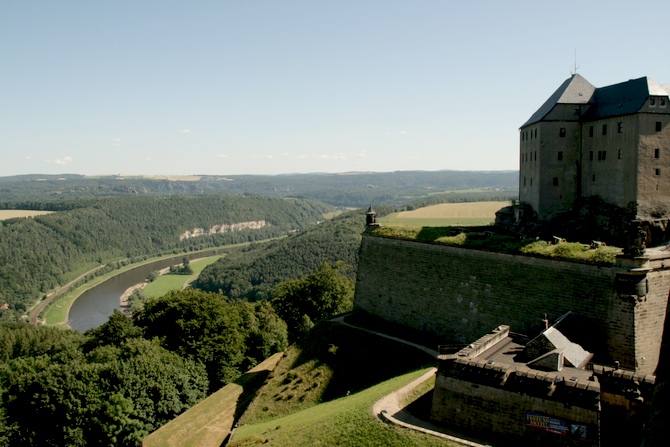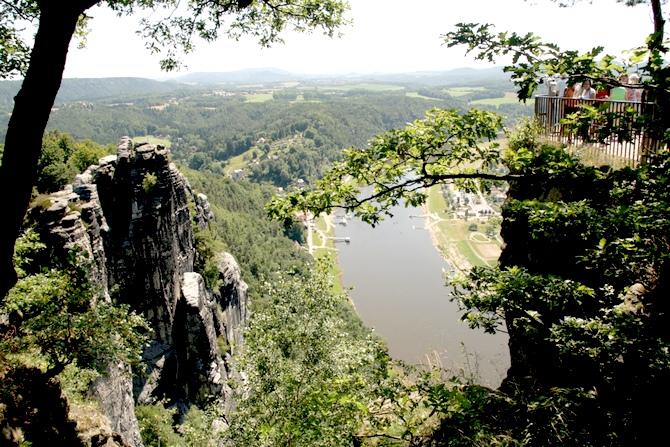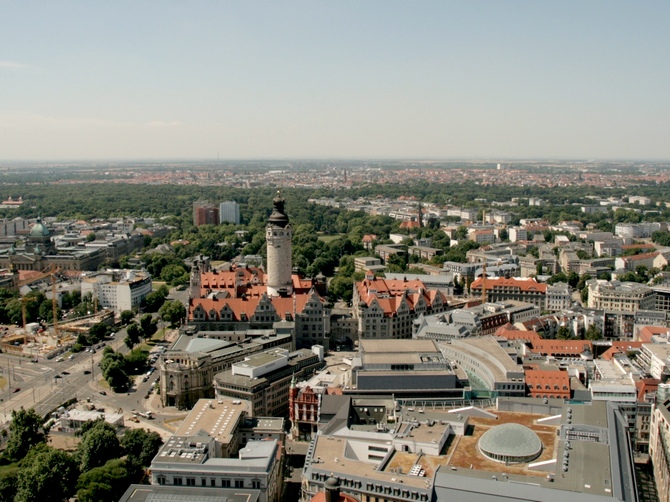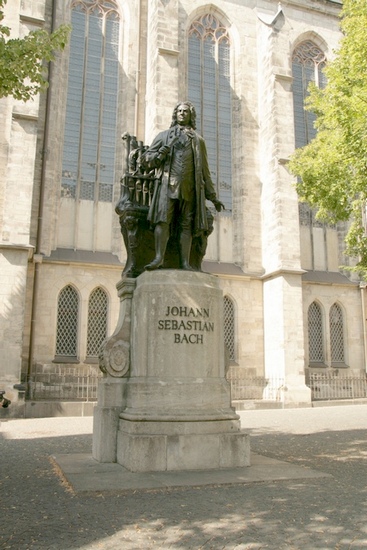Photographs: Anita Rao Kashi Anita Rao Kashi
Saxony is much like an orchestra where every instrument and note is important in making up the whole, discovers Anita Rao Kashi while visiting Saxony in Germany.
Trams and buses whizzed by, cars whooshed silently and cyclists missed me by a mere whisker as I perched a bit precariously, pressed against the railing, on the bridge leading to the old part of Dresden in Germany.
The scene before me was far too riveting for me to register any other discomfort or danger, not that there was necessarily any. The Elbe flowed tranquilly in front of me and ranged across on its banks were a series of ancient ornate baroque buildings -- the art academy, royal palace, Semper Gallery, the theatre platz and behind them the towering the church and the Zwinger.
Reflected in the blue waters of the Elbe on which lazily plied a couple of schooners, it was indescribably beautiful.
Please click NEXT to continue reading...
PICS: Saxony, where Aurangazeb still holds court
Image: Moritzburg CastlePhotographs: Anita Rao Kashi
I could have stood and gazed at the scene for hours perhaps but it was just the beginning of the trip through Saxony and I had much to absorb in a week, so I wandered down from the bridge and across to the individual buildings.
Each was magnificent in its own right.
The Moritzburg Castle was enigmatic and housed invaluable treasures including an elaborate set of Aurangazeb and his court in exquisite gems, precious stones and gold; the Zwinger was fabulously laid out and I could only imagine the boisterous parties it might have hosted; the Cathedral was regal and had beautiful stained glass works inside.
But what really mesmerised me was the Church of Our Lady of Frauenkirche, rising majestically into the sky.
It was completely destroyed during World War II and painstakingly rebuilt almost exactly like the original with even some stones from the original.
Later in the night, I even sat on its steps and listened to opera students singing in full-throated harmony.
PICS: Saxony, where Aurangazeb still holds court
Image: Konigstein fortressPhotographs: Anita Rao Kashi
Early next morning, I headed to Konigstein fortress, a remarkable structure atop a rocky table hill which sat on the banks of the Elbe.
Considered to be among the largest hill top fortifications in Europe, it was built more than eight centuries ago and was used for many of these centuries as a state prison.
It was imposing in its sheer ruggedness and I spent over an hour wandering around the pathways before taking a cobbled path downhill.
PICS: Saxony, where Aurangazeb still holds court
Image: Bastei rock formations on the Elbe.Photographs: Anita Rao Kashi
From there I went to the incredible and mysterious-looking formations at Bastei, which also stood on the Elbe.
A series of craggy rocky-like fingers and formations jutted straight out of land and rose for hundreds of metres.
The entire area was connected by a walking path and led to various view points from where I could see for miles around across villages and scattered mansions and castles, while the enigmatic sandstone formations formed a constant backdrop.
I was told that the area packed plenty of hiking and trekking trails but since I was short of time, I reluctantly had to skip it and longingly looked back when it was time to leave.
PICS: Saxony, where Aurangazeb still holds court
Image: A bird's eye view of Leipzig.Photographs: Anita Rao Kashi
In contrast to this natural ruggedness, the next day I travelled to Leipzig.
A bustling city, I could sense the music everywhere.
Owing to the strong cultural, especially music associations of the city, it has been connected in some way to almost all the musical greats of Germany.
In various parts of the city I found statues and commemorations to Bach, Beethovan, Wagner, Brahms… Not just musical geniuses but Leipzig had associations with some other noted German names -- Goethe, Schiller and Hahnemann.
PICS: Saxony, where Aurangazeb still holds court
Image: Bach monuments in LeipzigPhotographs: Anita Rao Kashi
The Bach museum was a musical tribute to the genius and lilting tunes could be heard everywhere, even in the toilets!
A musical trail weaving all over the city, with stainless elements on the pavement, led fans through a route that connected the musical aspect of the city.
And the day I visited, I found Latin American bands paying tributes to the greats in their own way.
As the evening shadows lengthened I went inside the St Thomas Church, where in front of the altar was a little raised platform indicating that Bach had been buried there.
It seemed like a fitting end to a momentous day and I swear I could hear strains from one of his Brandenburg Concertos as I left the church.
PICS: Saxony, where Aurangazeb still holds court
Image: Meissen's Albrechtsberg castle and Gothic CathedralPhotographs: Anita Rao Kashi
On Day Four I headed to what is probably the best known of Saxony's brands -- Meissen.
Quite apart from the magnificent Albrechtsburg Castle and the Gothic cathedral, both of which were stunning in their own right, and a pretty market place with another beautiful church, what held my interest was the porcelain that's become synonymous with fine china.
Considered to have been started during the reign of Augustus the Strong, one of Saxony's predominant rulers, Meissen porcelain is known the world over for its delicacy and exquisite craftsmanship.
I toured the factory and saw with interest the way crockery and showpieces are manufactured, decorated and finished.
And then had a bit of fun indulging in something really rare -- sipping on coffee and chocolate on Meissen porcelain cups and saucers.
I was particularly intrigued and even intimidated by one signature pair that cost Euro 1800 a set!
PICS: Saxony, where Aurangazeb still holds court
Image: A mural in DresdenPhotographs: Anita Rao Kashi
On the last day, I went to another of Saxony's showpieces -- the transparent Volkswagen manufactory in Dresden where the iconic Phaeton is produced and marveled at the engineering, precision and efficiency of a German production line.
It was so neat, clean and comfortable that even large music and opera events are held inside from time to time!
In the evening, I wandered around the Dresden's Neustadt area, a lively place with pavement cafes, bars and restaurants, courtyards sporting graffiti and wall art and street musicians.
I spent the evening happily wandering around and soaking up a different kind of atmosphere.
As I headed back home, the various images gathered over the last few days vied for attention but I realised that rather than one overarching image, Saxony was much like an orchestra where every instrument and note is important in making up the whole.









Comment
article